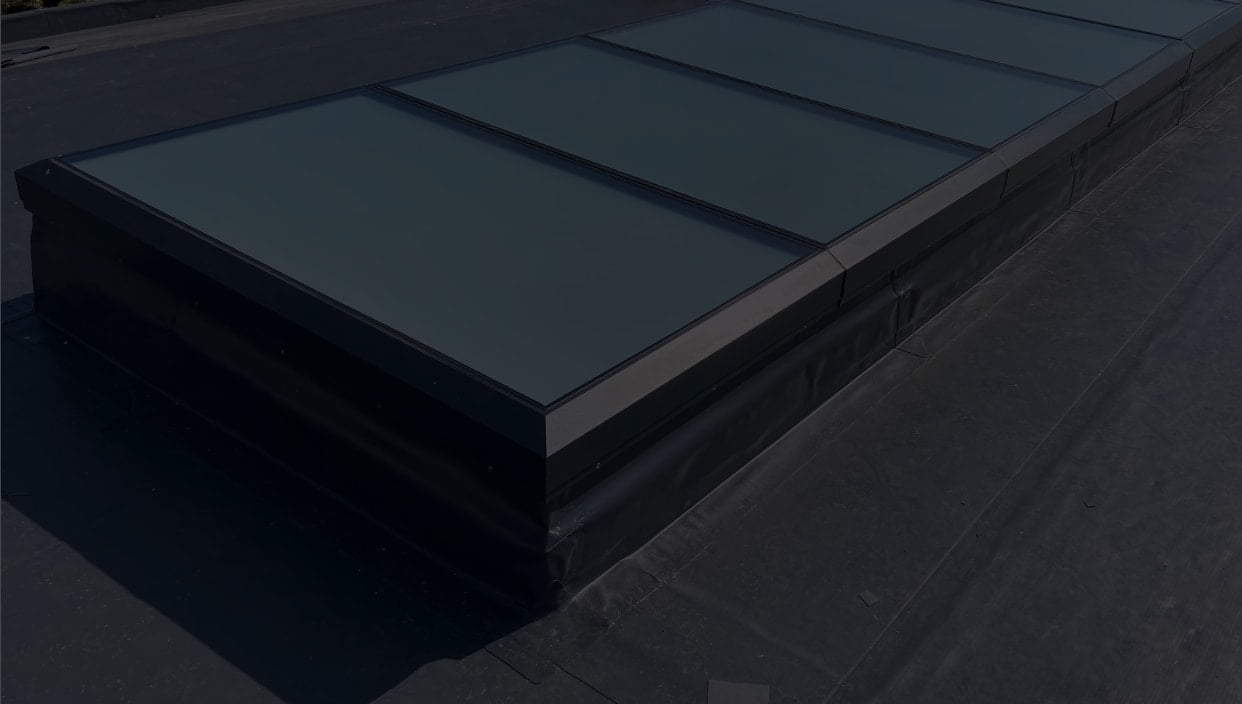Read our helpful guide to learn what toughened glass is and find answers to frequently asked questions.
What is toughened glass?
Toughened glass, or tempered glass, is specially treated to be far more resistant to breakage than regular glass. It is up to five times stronger than normal glass, which means that it has to be hit much harder in order to break. If it does break, it shatters into lots of small pieces instead of splintering into large shards. This provides a major safety advantage in all of its applications.
How is toughened glass made?
Toughened glass is made from regular annealed glass, treated with a thermal tempering process. A sheet of annealed glass is heated to above its “annealing point” of 600°C. Its surfaces are then rapidly cooled, while the inner portion of the glass remains hotter. The different cooling rates between the surface and the inside of the glass gives different physical properties, resulting in compressive stresses of the surface balanced by tensile stresses in the body of the glass.
These counteracting stresses give toughened glass its increased strength. Toughened glass is physically and thermally stronger than regular glass. Any cutting or grinding must be done prior to tempering. Cutting, grinding, and sharp impacts after tempering will cause the glass to fracture.
What is toughened glass used for?
Toughened glass has a wider range of uses in products than regular glass because of its safety and strength. As a result, it is used in several features, including:
- Windows
- Skylights
- Architectural glass
- Sliding glass door
- Glass tables
- Glass balconies
- Glass office partitions
- Kitchen glass splashbacks
- Glass balustrades
- Walk on glass
Ultimately, toughened glass is used in areas where greater strength or safety is required, such as windows near doors or windows at low level.
Is toughened glass breakable?
Despite its enhanced strength and durability, toughened glass is not immune to breaking. Toughened glass is designed to withstand significant stress and temperature variations. However, it can still shatter under extreme force or when damaged at its edges, where its strength is most compromised.
What differentiates it from laminated glass is that it will break into chunks, rather than splintering and becoming a safety hazard. Learn more about the differences between toughened glass and laminated glass.
How can I tell if glass is toughened?
You can look for specific signs to identify toughened glass. One visual indicator is the presence of a subtle pattern or waves on the glass surface, a result of the rapid cooling process during manufacturing. This pattern may be more visible through polarised sunglasses. Toughened glass often has a stamp or etching on a corner, indicating it has been tempered. Tapping the glass gently with a metal object can reveal a distinct sound compared to non-toughened glass, sounding denser due to its increased strength.
You can also look closely at the pane for spots, dimples, warping or bending, as these can arise during the heating process.
Related articles:
Glass rooflights
We stock an impressive range of rooflights and skylights, including:
Find yours today, or contact us if you have any questions.
FAQs
Can toughened glass be cut?
Toughened glass can’t be cut once the toughening process has been completed, so any cutting or grinding must be done prior to tempering.
Why do we need toughened glass?
Toughened glass is necessary in windows and doors that may be in danger of breaking. Although unlikely, it’s possible you may trip and come into contact with a door or window in your home. Should this happen, toughened glass would significantly reduce the risk of injury, shattering into lots of small pieces rather than large, sharp pieces.
What’s the difference between toughened glass and tempered glass?
Toughened glass is just another name for tempered glass or safety glass, so there’s no difference between the terms.







